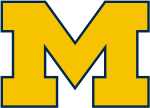William I. Fine Theoretical Physics Institute
The William I. Fine Theoretical Physics Institute is a research institute in the University of Minnesota College of Science and Engineering. FTPI was largely the work of physics Professor Emeritus, Stephen Gasiorowicz and University alumnus and Twin-Cities real-estate developer William I. Fine. The Institute officially came into existence in January 1987. FTPI faculty consists of six permanent members: Andrey V. Chubukov, Alex Kamenev, Keith Olive, Maxim Pospelov, Mikhail Shifman, and Boris Shklovskii.The William I. Fine Theoretical Physics Institute has on Oversight Committee consisting of ten members. The Oversight Committee is the board of directors that make decisions concerning the staffing and budgeting of the Institute.
Excerpt from the Wikipedia article William I. Fine Theoretical Physics Institute (License: CC BY-SA 3.0, Authors).William I. Fine Theoretical Physics Institute
Southeast Church Street, Minneapolis
Geographical coordinates (GPS) Address Nearby Places Show on map
Geographical coordinates (GPS)
| Latitude | Longitude |
|---|---|
| N 44.975277777778 ° | E -93.234444444444 ° |
Address
Tate Laboratory of Physics
Southeast Church Street 116
55455 Minneapolis
Minnesota, United States
Open on Google Maps






